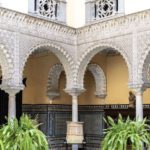The urban centre of Lebrija sits on the slopes surrounding the castle hill, with an elongated east-west shape. It is bounded on three sides (south, west and north) by steep slopes that make urbanisation impossible. Since its origins, the hill has been an old fortified acropolis and a place to enjoy the landscape. In this post we will talk a little bit about the top things to do and visit in Lebrija
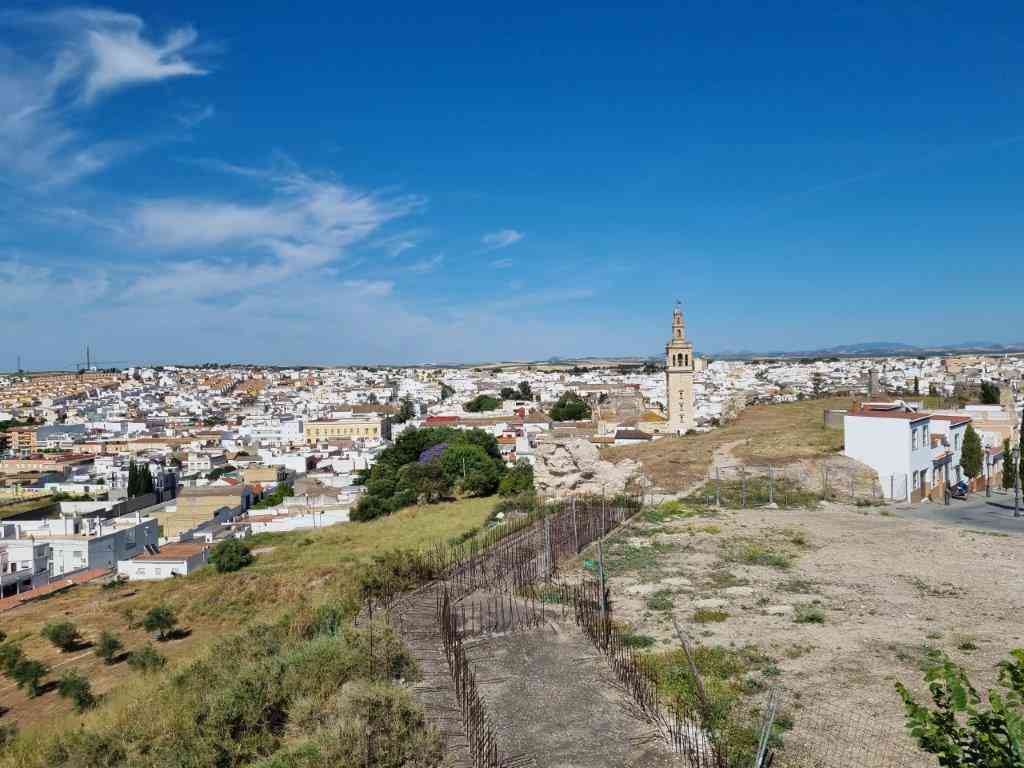
With a millenary culture, it has an extensive heritage.
The ruins of the castle, of Arab origin from the 11th century, conserve several walled walls. It has a new reconstructed part at the foot of Cuesta de Castillo street.
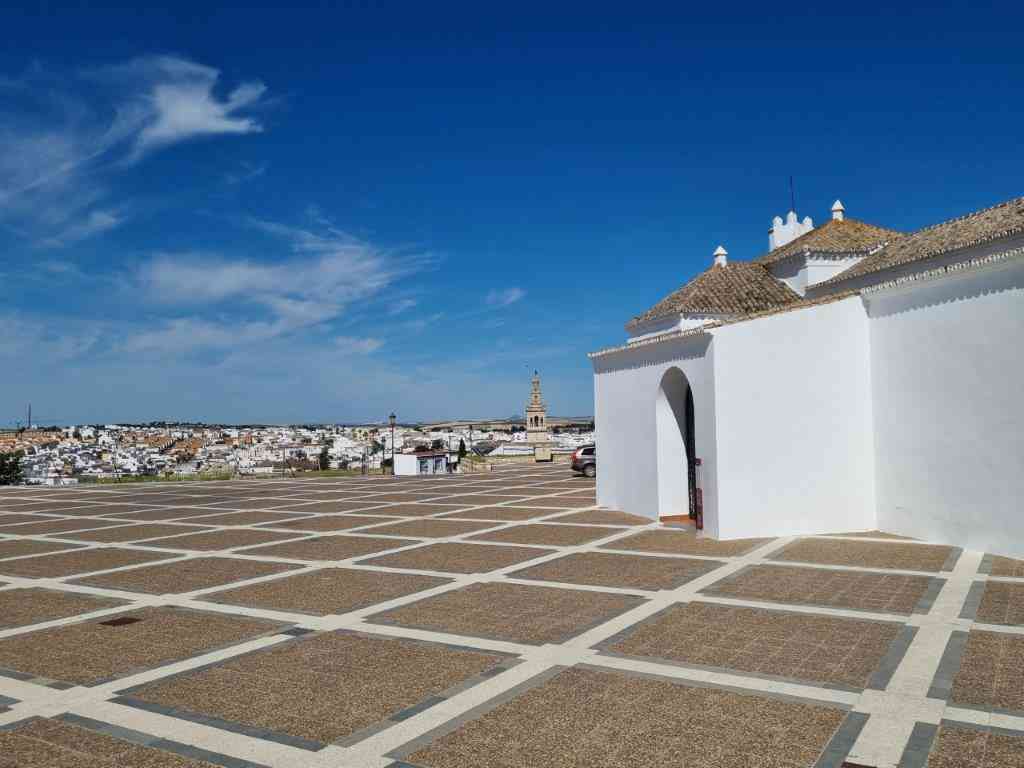
That is to say that, Inside the castle, we find the renovated 14th century Mudejar-style chapel of Santa María del Castillo, which has three naves and is home to the patron saint of the city and the brotherhoods of Jesús Atado a la columna (Jesus tied to the column) on Holy Wednesday and Santo Sepulcro (Holy Sepulchre) on Good Friday.

To clarify, In this area we can see the monument to the Sacred Heart of Jesus which dominates the region.
Contents
- 1 Top things to do and visit in Lebrija nº1, Historical centre.
- 2 Top things to do and visit in Lebrija nº2, Picturesque streets.
- 3 Top things to do and visit in Lebrija nº3, Main monuments of Lebrija.
- 4 Top things to do and visit in Lebrija nº4, Other religious buildings:
- 5 Chapels, open during hours of worship.
- 6 Top things to do and visit in Lebrija nº5, Other monuments and places of interest.
- 7 In conclusion
Top things to do and visit in Lebrija nº1, Historical centre.
The historic quarter of the town is full of stately houses and public and religious buildings.
The centre of the town is the Plaza de España, where the 19th century neoclassical Town Hall and the Parish Church of Santa María de Jesús are located.
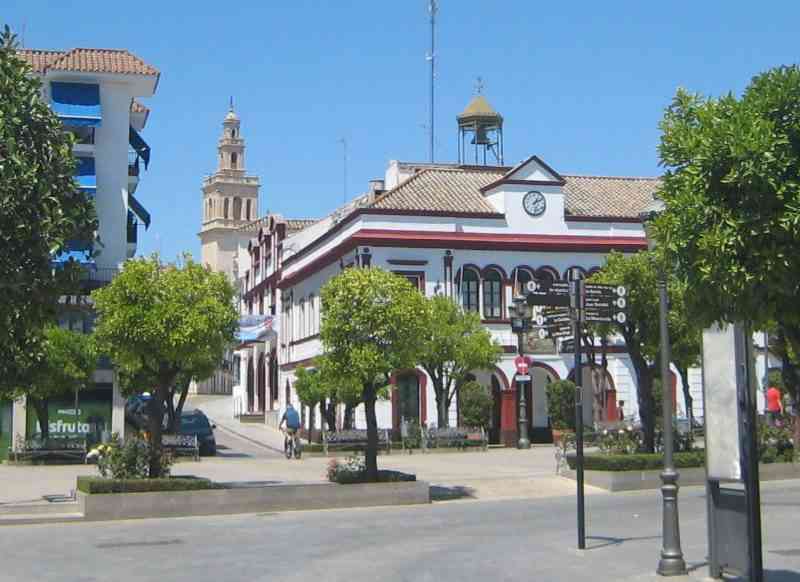
In the centre, the monument to Antonio Nebrija.
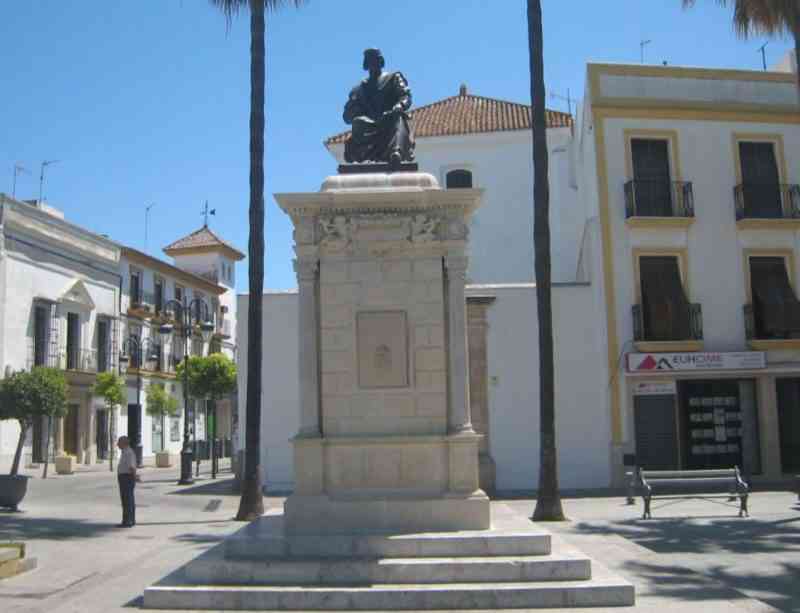
In the courtyard of the Town Hall there is a Heritage Information Point about Antonio de Nebrija.
Top things to do and visit in Lebrija nº2, Picturesque streets.
In its surroundings we highlight the streets: Juan Pedro Vidal, direction to the church of La Oliva, with the convents of the Nuns and the Sisters of the Cross, Andres Sanchez de Alba, typical Andalusian street with the chapel of Belén, Arcos, commercial with the market, Corredera where next to the mentioned monuments, we can see shops bars, several ancestral houses and an oil mill.
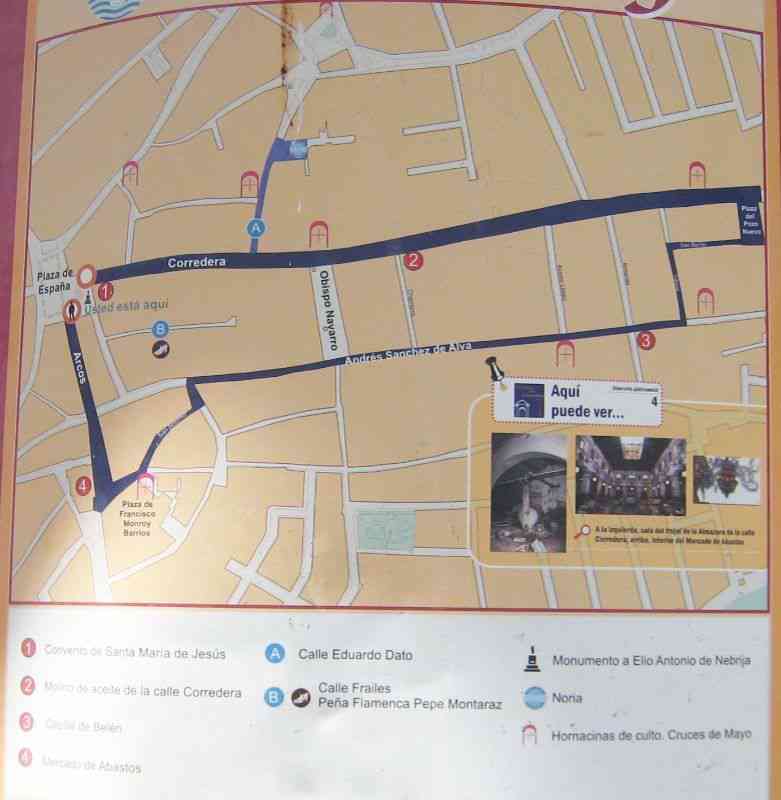
The squares of interest are, to the south of the Plaza de España, the Plaza de Barrionuevo, where the Cilla del cabildo eclesiastico, the tourist office and the Casa de la Cultura are located.
The Plaza del Martillo, with a pavilion, near the Bodegas de Andrés Ahumada.
To the north, the Plaza de Manuela Murube, with the church of San Francisco, Casa de la Misericordia and Asilo de San Andrés and Plaza de Manuel Halcón, with several ancestral homes and the winery of the Marqués de San Gil.

The Mirador de la Peña is located in this area.
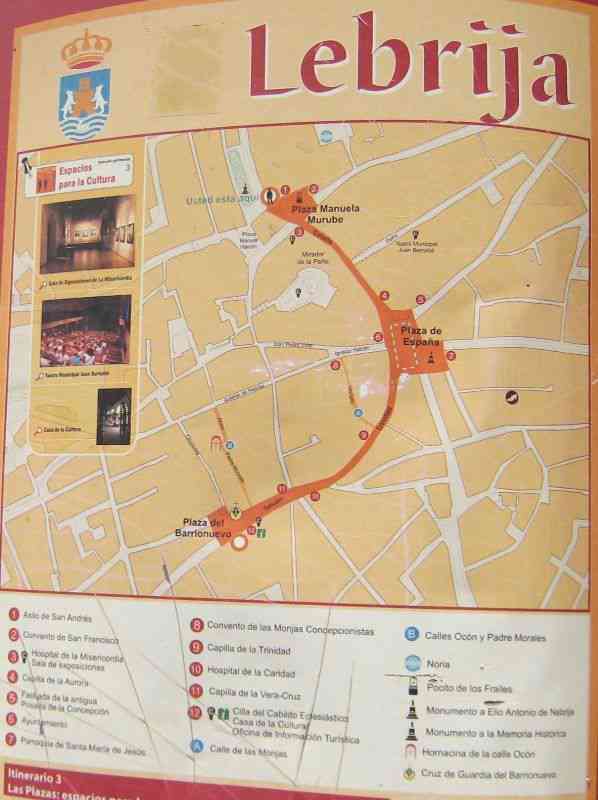
Top things to do and visit in Lebrija nº3, Main monuments of Lebrija.
It is located in the old quarter, in the area around the Plaza de España.
The Church of Nuestra Señora de la Oliva
Firstly, It offers cultural visits and worship services in the afternoons. A large temple that was formerly a mosque. It is of Mudejar Gothic style, built in the 13th century, although it has been greatly transformed by reforms in the 13th century, Mudejar, 15th century Renaissance and 18th century Baroque, with a tower inspired by the Giralda.
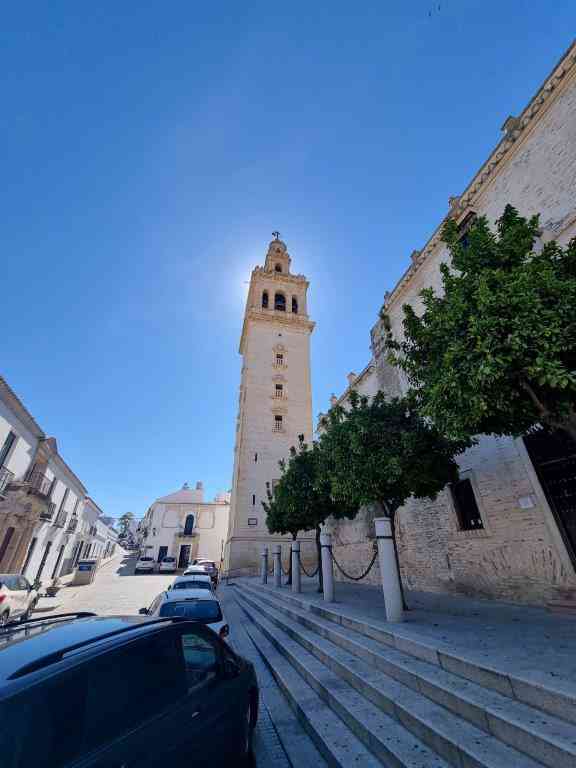
Secondly, Inside, with three naves, the presbytery is beautifully decorated with the magnificent main altarpiece by Alonso Cano, presided over by the Virgin, a masterpiece by this sculptor, who also made the images of St. Peter and St. Paul. Paintings by the Flemish painter Pablo Legot, 17th century.
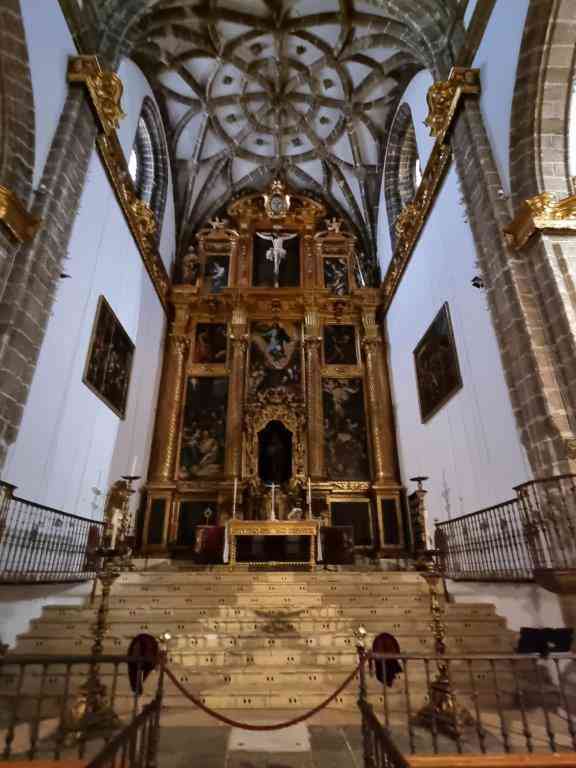
Further, of particular note are the altarpieces at the head of the naves, dedicated to Santiago and Santa Ana, the altarpiece of the Virgin of La Piña, the work of Juan Bautista Vázquez el Viejo, 16th century, the mural of San Cristóbal, 15th century, and the chapel of Las Ánimas with the Cristo Yacente.
Moreover, the beautifully decorated choir, with the choir loft where we can see the Renaissance paintings by Villegas Marmolejo, 16th century.
In addition, It is the headquarters of the brotherhoods of the entry into Jerusalem on Palm Sunday, the Holy Sepulchre and the Sacramental.
The complex is completed by the Sacred Museum, the Cloister or courtyard of the Orange Trees and the Sacramental Chapel, a 16th century Renaissance building with a Baroque interior, dedicated to the Immaculate Conception.
Opposite the church we can see the building of the Cilla del cabildo Municipal, 16th century, the Casa de la Juventud, located inside, houses Roman archaeological remains of two houses, with a courtyard.

Behind the church is the Plaza del Hospitalito, with the remains of a 14th century hospital.
In this area was the Jewish quarter, today remembered by the Calle Judería.
Top things to do and visit in Lebrija nº4, Other religious buildings:
Usually open during hours of worship, weekday afternoons and Sunday mornings.
Highlights:
The parish church of Santa María de Jesús
in the Plaza de España, from the 16th century and a former Franciscan tertiary convent.
Its altarpiece stands out, with the image of the Virgin and the Christ of the Good Death. That is to say that, It is the headquarters of the brotherhoods of the Oración en el Huerto on Palm Sunday and the Soledad on Good Friday.
The Church of San Francisco
Plaza de Manuela Murube, from the former convent of the order, 16th-17th centuries, treasures a rich heritage, highlighting the Baroque high altar and the chapel of San Antonio, to clarify, it is the headquarters of the brotherhood of the Virgen de los Dolores and the Nazareno, at dawn on Good Friday.
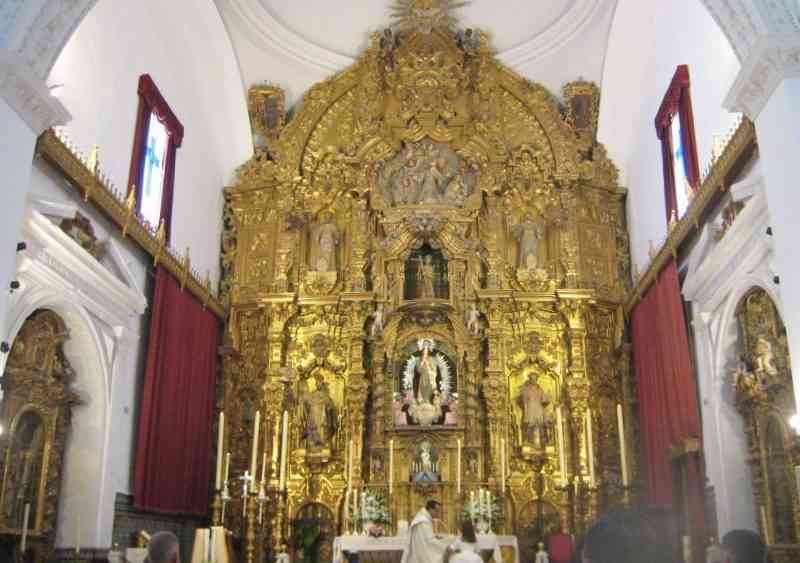
Convent of the Sisters of the Cross
A former 16th century palace. Modern chapel dedicated to the Virgen de la Salud.
Monastery of the Immaculate Conception, “Las Monjas” of the Order of the Franciscan Conceptionists.
From the 16th century, with a Baroque façade on the left, forming the typical alley of the Nuns. They are famous for their confectionery.
Both convents in Juan Pedro Vidal street, close to the Plaza de España.

It has a baroque interior, with a main altar dedicated to the Immaculate Conception and among its altarpieces is that of its founder Beatriz de Silva.
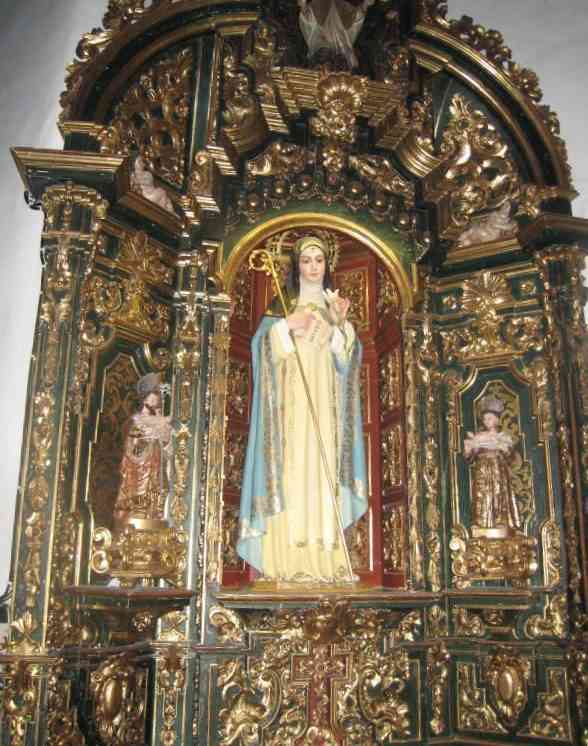
Chapels, open during hours of worship.
-Nª Srª de la Aurora, next to the Plaza de España. Baroque from the 18th century, headquarters of the brotherhood of Cristo de la Humildad, Holy Wednesday.
-Belén, Calle Sanchez Alva from the same period. Headquarters of the Ecce Homo, popular brotherhood of the Gypsies, Holy Wednesday and of the brotherhood of El Rocío.
-Vera Cruz from the 16th century. Tetuán street, with a Crucifix from the same period. Headquarters of the brotherhood of the same name, Good Friday.

Top things to do and visit in Lebrija nº5, Other monuments and places of interest.
Hospital de la Misericordia, 14th to 18th centuries, Calle Niño Perdido. It was used for foundlings and is now an exhibition hall.
Hospital de la Santa Caridad, Calle Trinidad, 17th-19th centuries, now a home for the elderly.
Asilo de San Andrés, a beautiful building dating from 1913, Plaza de Manuela Murube.
Oil mill in Calle Corredera.
Abastos Market, Arcos Street.
Posada de la Concepción, from the 18th century.
Birthplace of the flamenco singer Juan Peña el Lebrijano, in Calle San Francisco nº 56 and the Bar Casa Bocho. In Avenida Blas Infante Bloque 9. The epicentre of flamenco singing in the town.
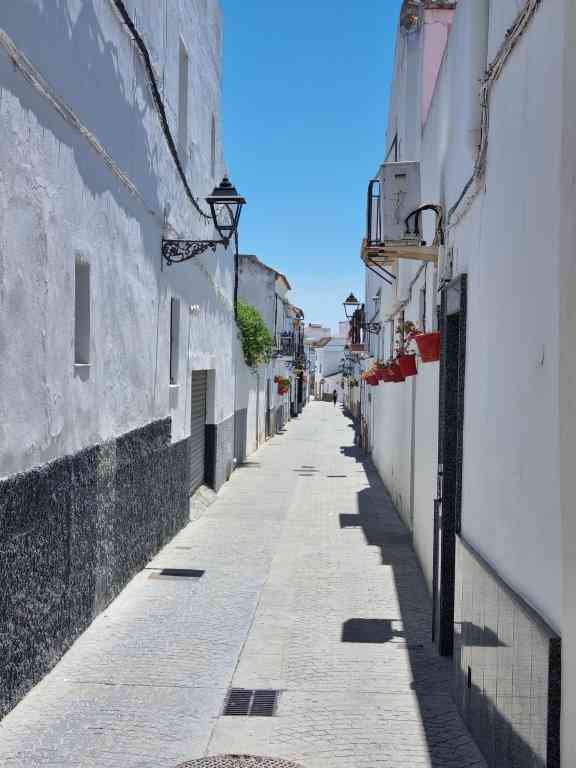
In conclusion
Now that you know a little bit more about the Top things to do and visit in Lebrija , make sure you visit our post about 7 places to visit in Andalucía for more information, experiences , or tailor made trips that will make you fall in love with Andalucía even more. And please for more info and insights, get in touch with us here or write us at info@alsherry.com and we’d be delighted to arrange / make plans with you or for you!

